March 2023 saw the global release of the Apple Music Classical service. Following Apple’s purchase of the classical music streaming service Primephonic in 2021, music lovers have eagerly waited to see how the company would use its acquired content and technology. Now that the Apple Music Classical service has launched, here’s what it provides and why you should consider downloading it.
What Is Apple Music Classical?
Apple Music Classical is an app dedicated solely to classical music. According to Apple, the service provides its users with access to “the world’s largest classical music catalog.” With over five million tracks covering classical music from medieval to modern, and thousands of exclusive albums, it’s a welcome resource for classical music lovers.
How Can Apple Users Access Apple Music Classical?
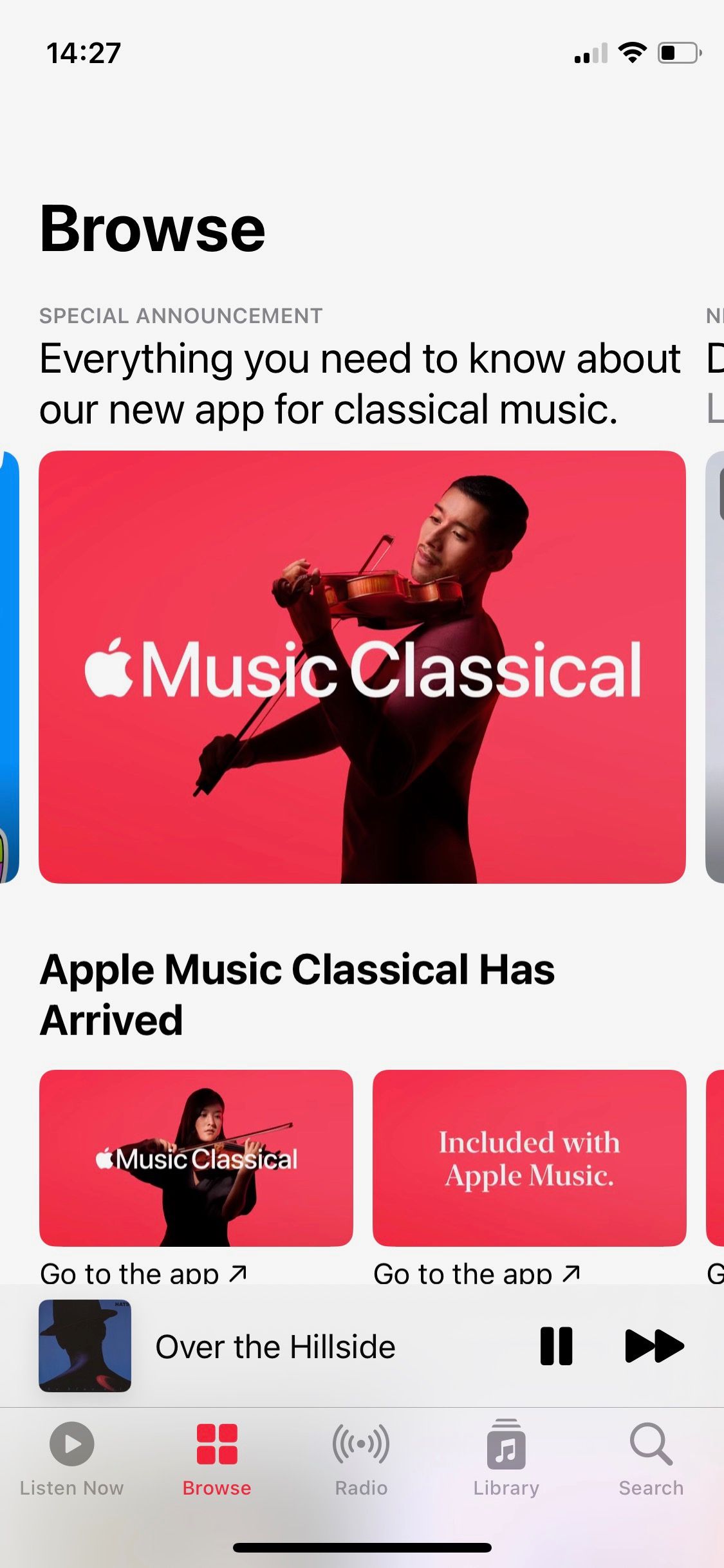
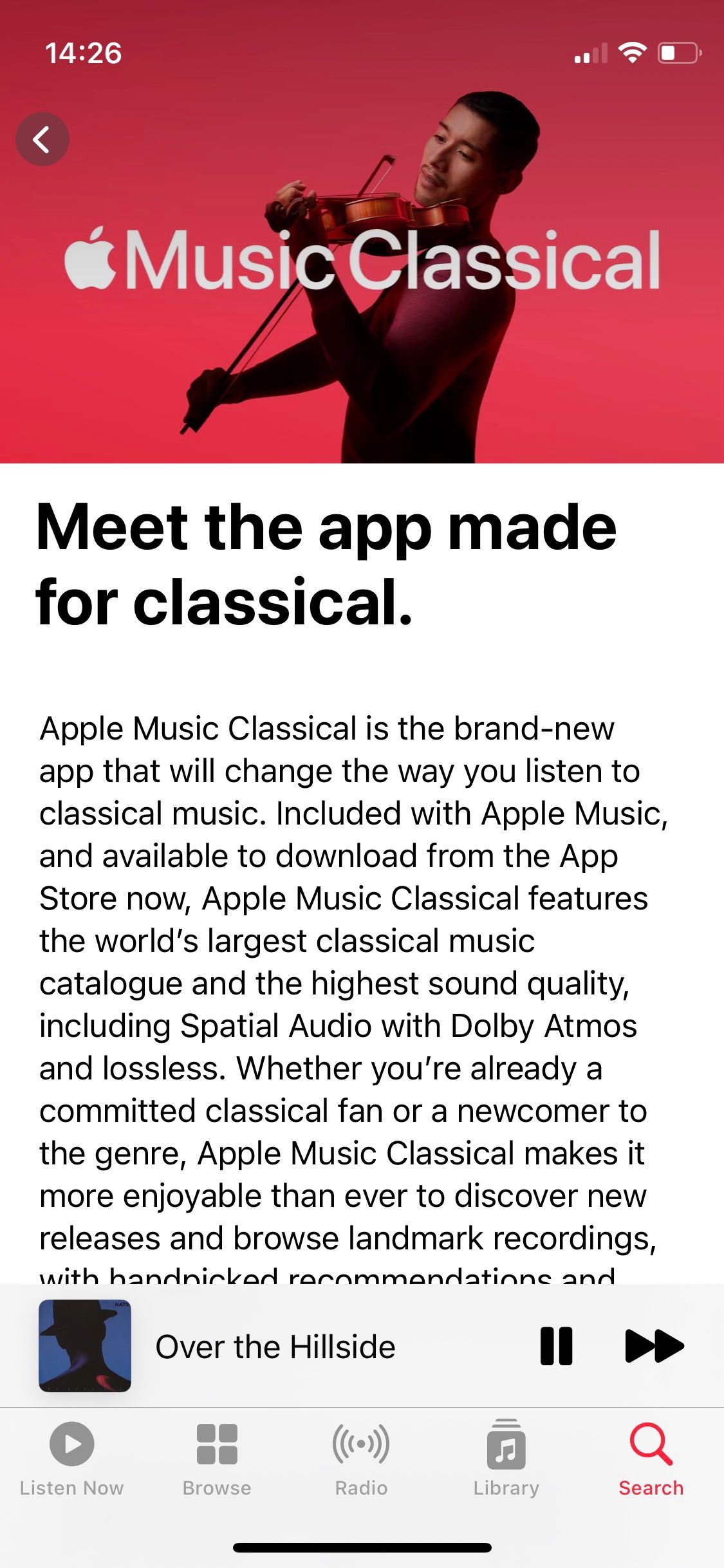
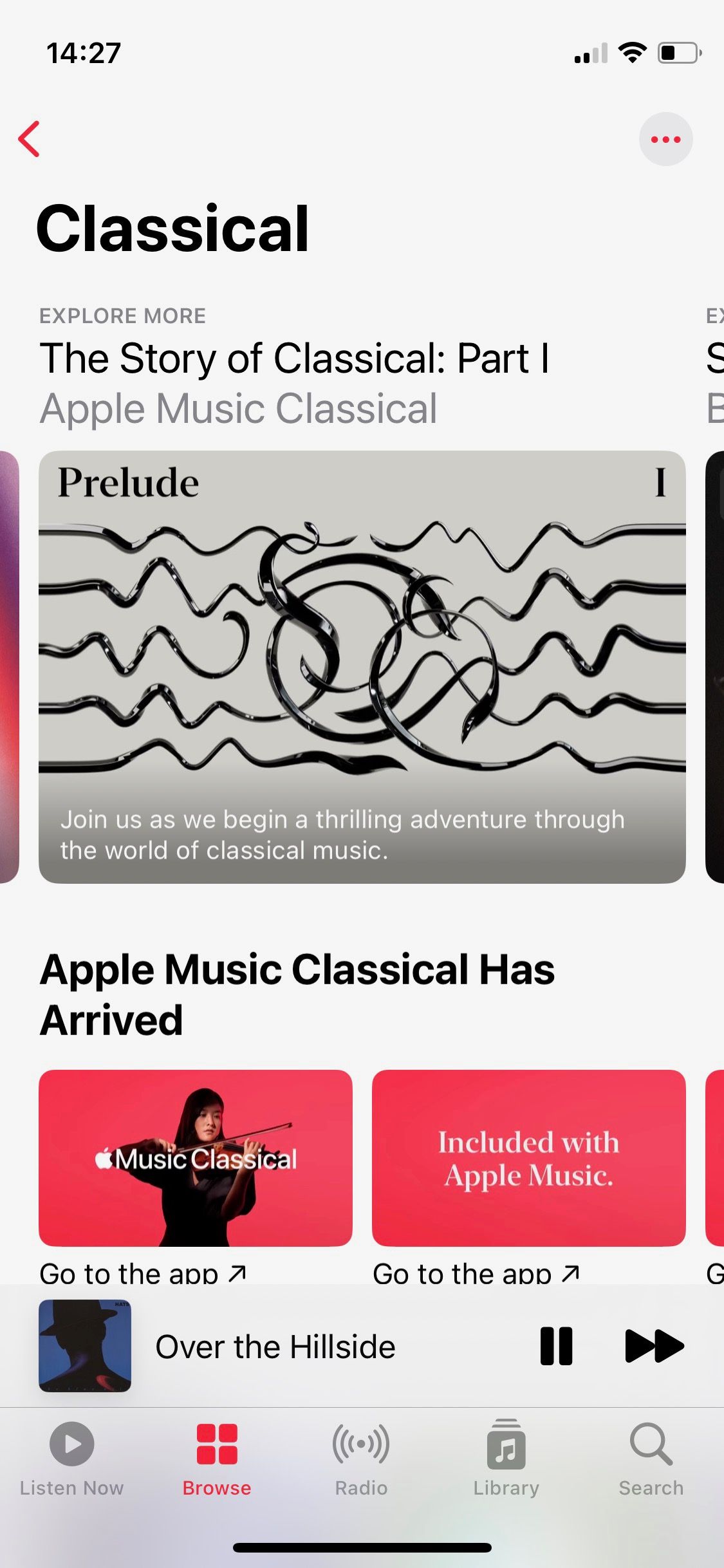
Apple Music Classical is included as part of your Apple Music subscription, so you’ll have to have an active subscription plan to get the service. Apple Music subscribers on all plans except the Apple Music Voice plan can use Apple Music Classical at no additional cost. Just download the app to get access.
This means that even if you're getting started with an Apple Music Family subscription, you can access Apple Music Classical. However, keep in mind that each member of your family will need an iPhone with the Apple Music app installed, and they’ll need to sign in to Apple Music with the same Apple ID they use with your family subscription.
If you subscribe to the Apple One bundle of services, Apple Music Classical has already been added, so you will also gain access at no extra cost.
At the time of writing, there is no version of Apple Music Classical for Android, although the Apple website states that this is "coming soon." However, we don't know how much that could be. In the meantime, there are lots of great websites to listen to classical music.
Download: Apple Music Classical for iOS (Subscription required)
How to Navigate Apple Music Classical
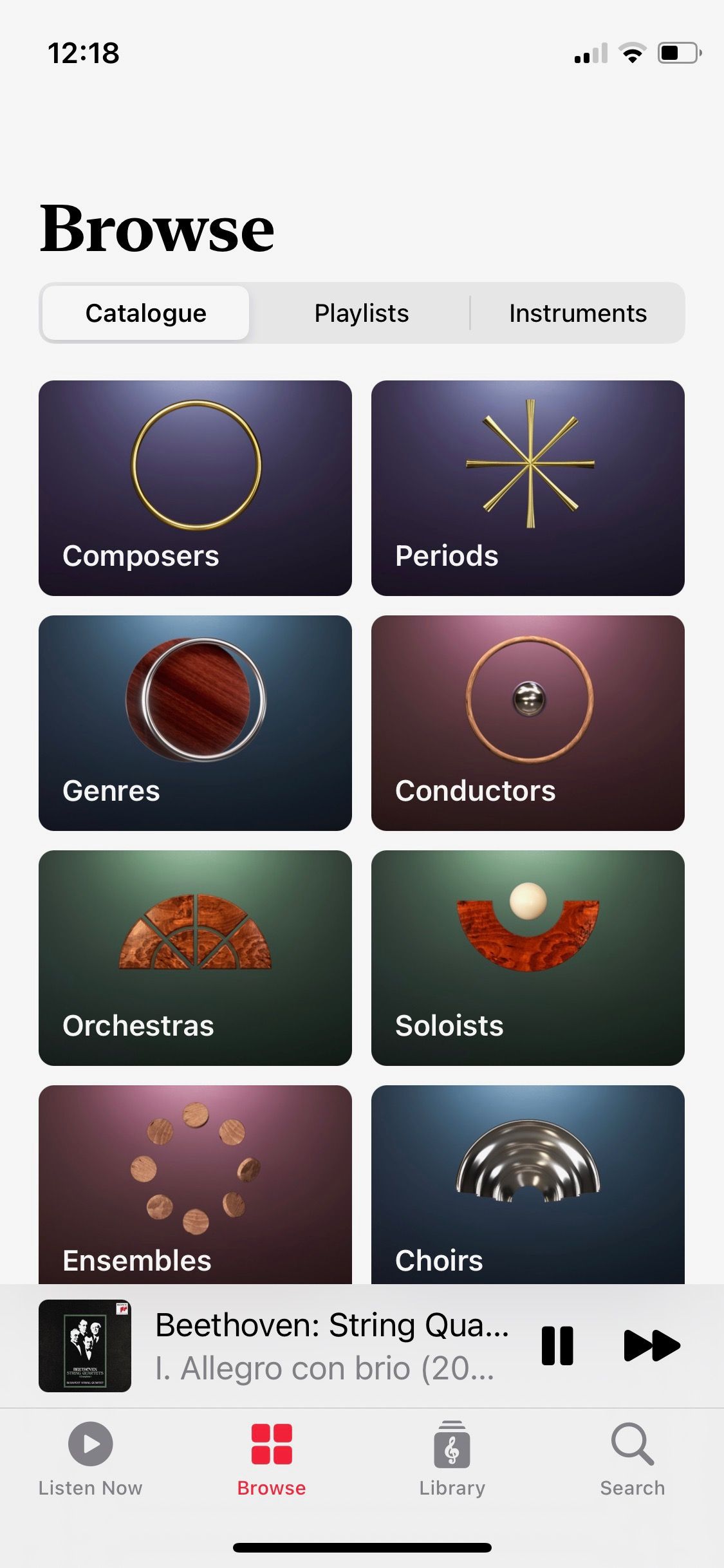
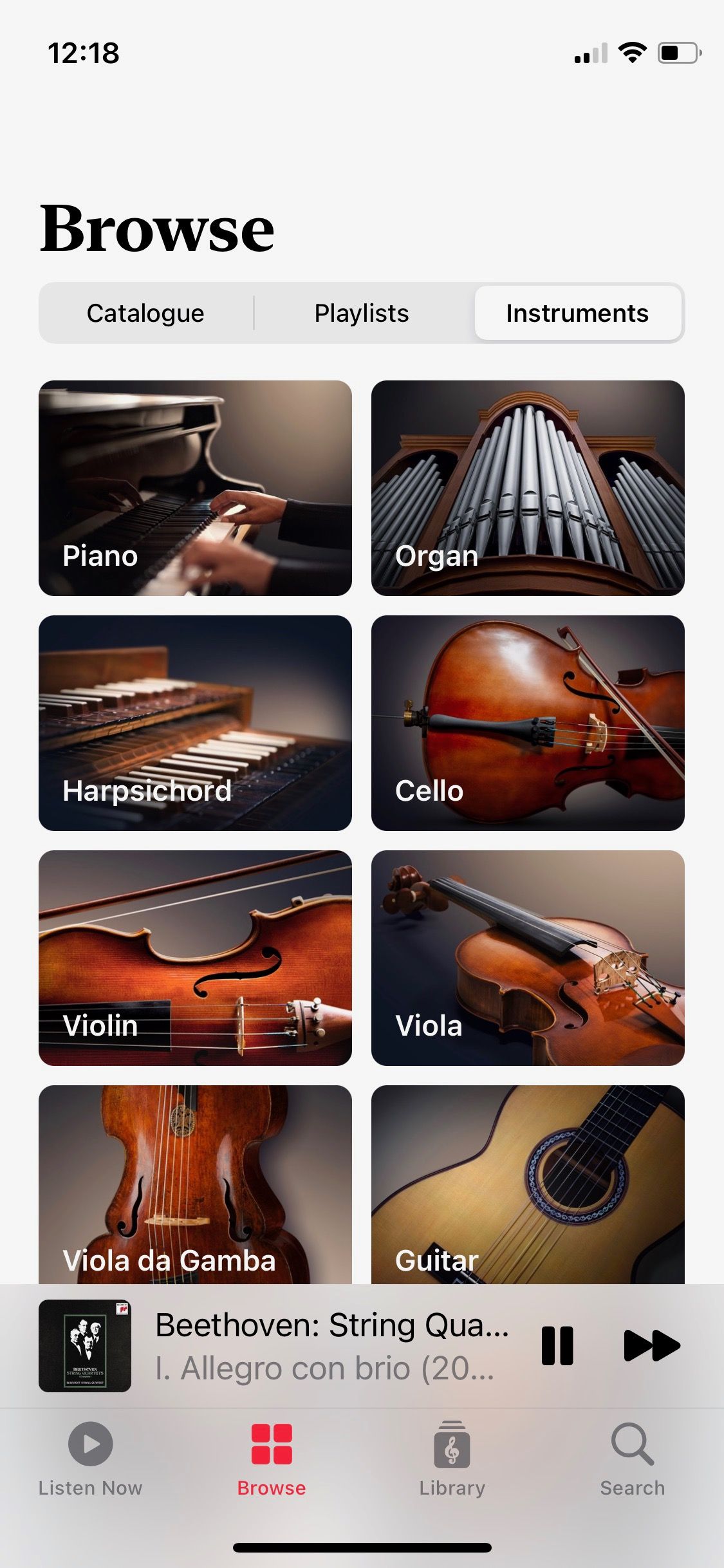
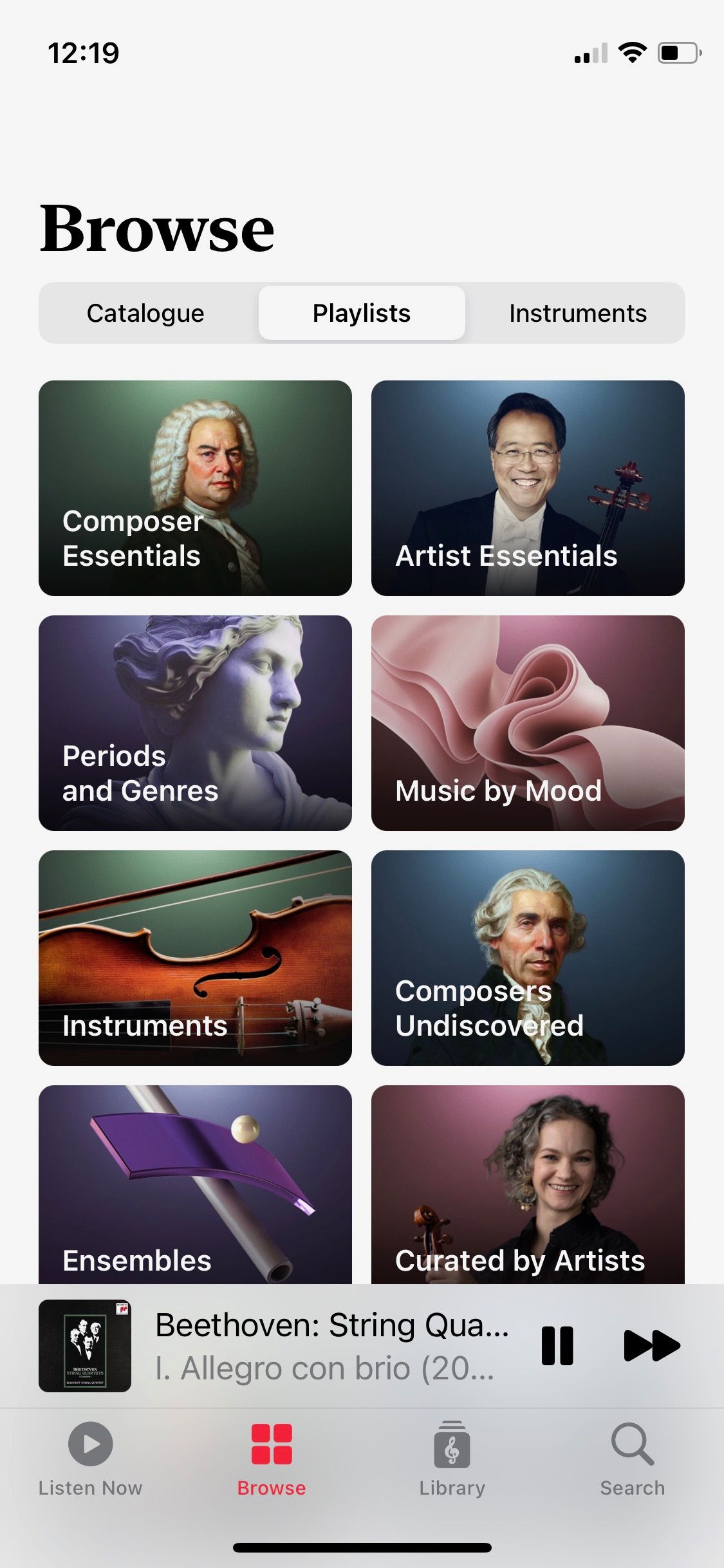
The Apple Music Classical app is intended to act as a companion to the Apple Music app. It has been created as a standalone app to support the complex data structure of classical music, which has multiple versions and recordings of many well-known pieces.
Finding exactly what you want to listen to is made easier by a powerful search tool that allows you to look up not just the composition but also narrow down your search to the exact version of the music you require. That means you can search a performance by a particular orchestra, conductor, or musician, and Apple Music Classical will do its best to find what you want.
Apple Music subscribers will find a very familiar design and similar features in the Apple Music Classical app, so exploring the app will be just as easy. The app is not only easy to navigate, but it also looks beautiful, with specially commissioned artwork of the most famous artists.
The Listen Now section is a great place to start exploring, with expert-recommended selections from the Apple Music library, along with featured new releases, exclusive playlists, and hidden gems from famous composers.
There's also a Browse section, which allows you to view the catalog by different categories, including:
- Composer
- Period
- Genre
- Conductor
- Orchestra
- Soloists
- Ensembles
- Choirs
You can also browse by instrument or choose from an extensive selection of curated playlists.
Why You Should Download Apple Music Classical
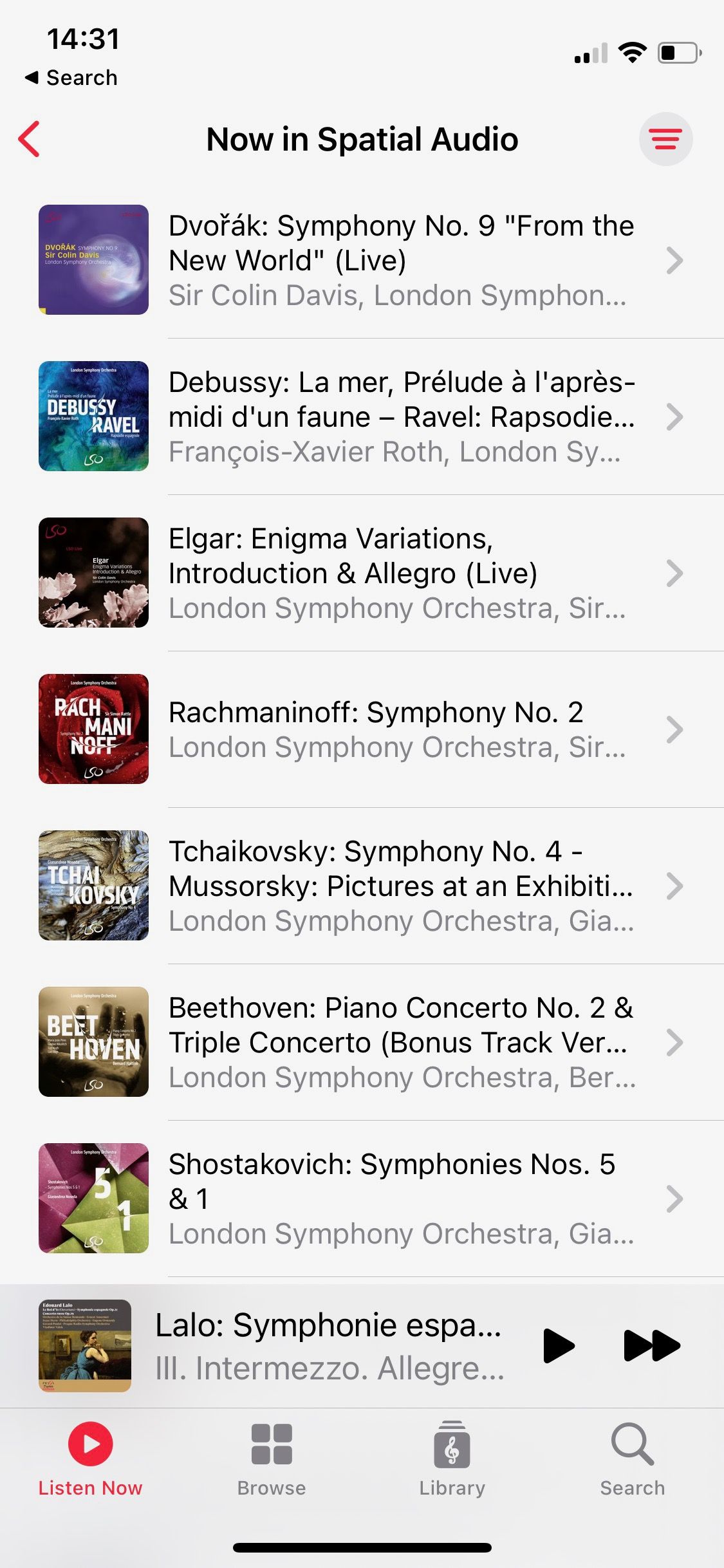
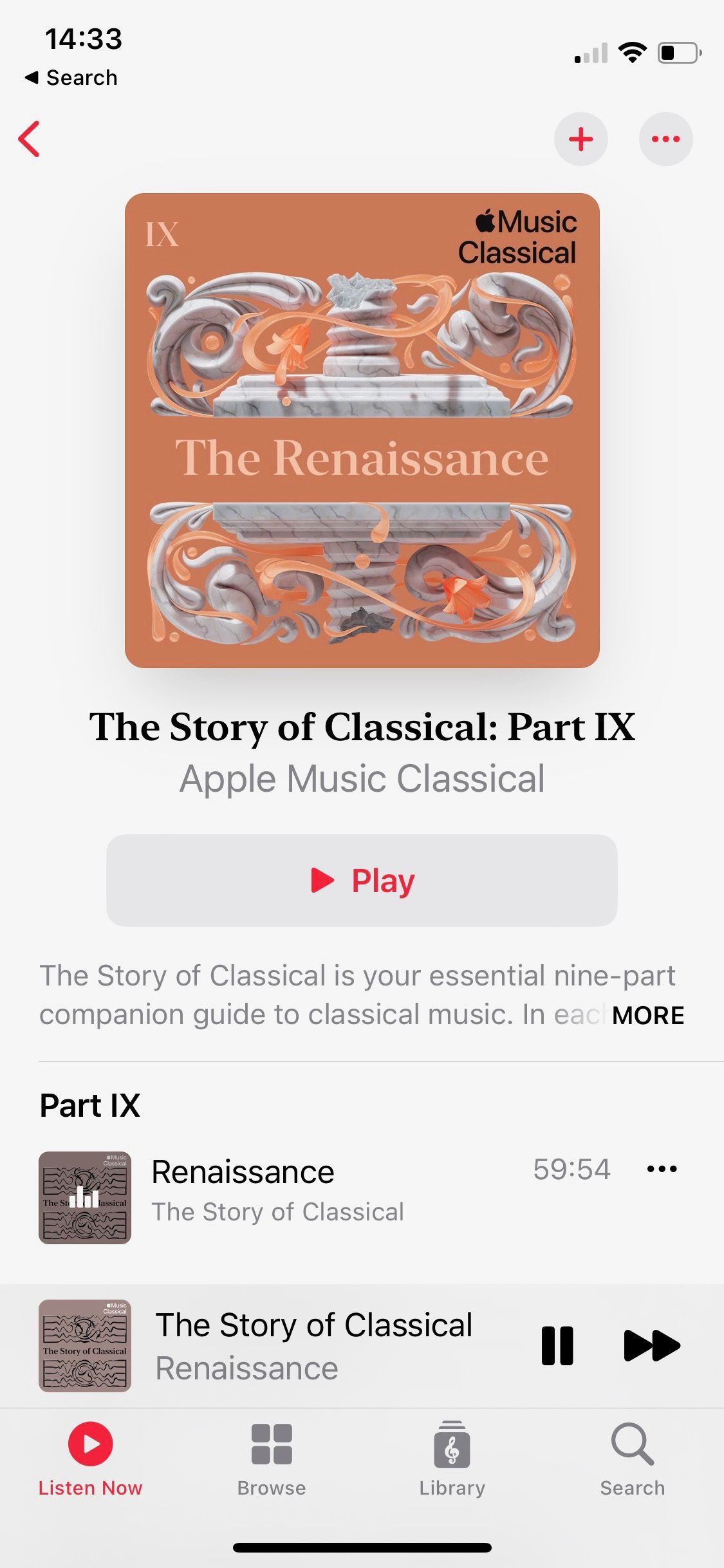
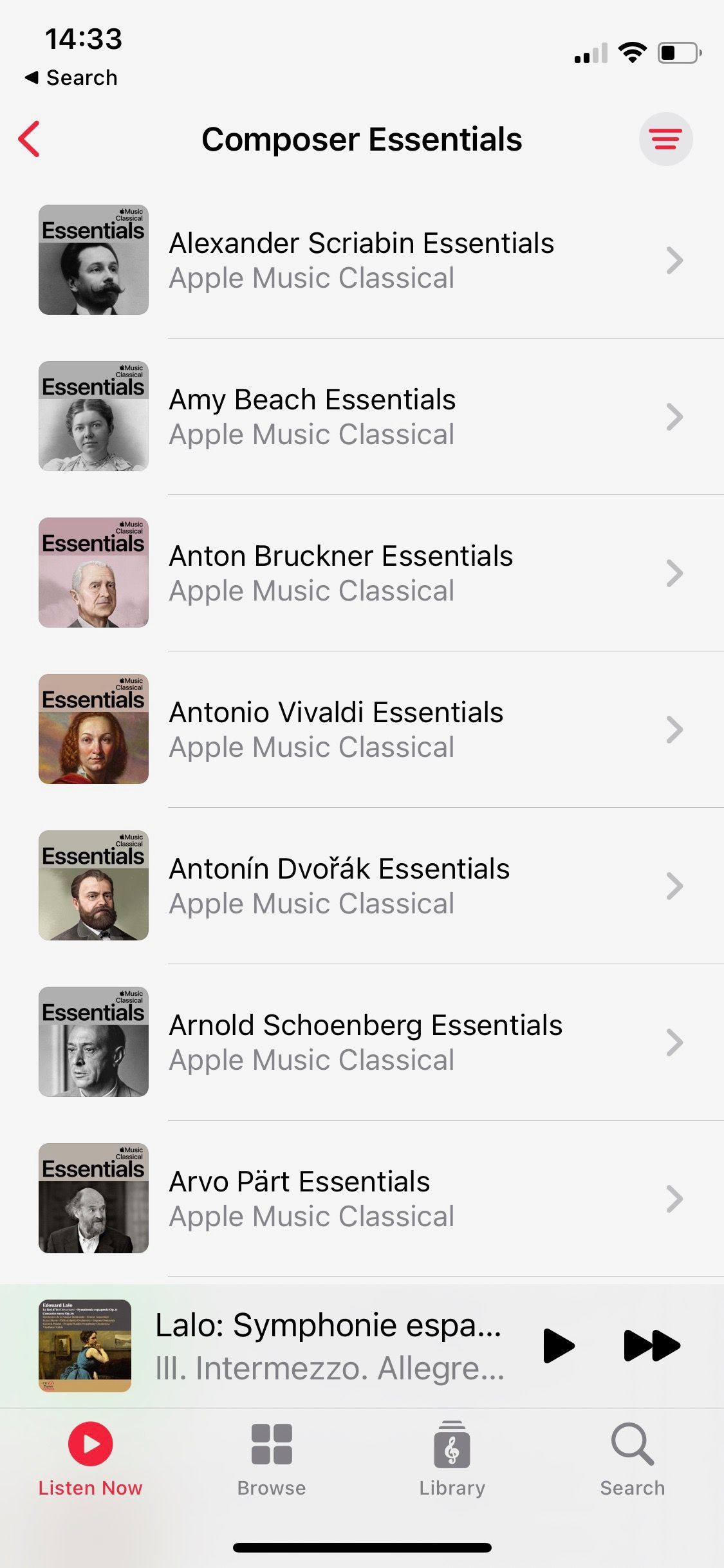
If you have any interest in classical music at all and you subscribe to Apple Music, it makes sense to download Apple Music Classical right away.
Apple Music Classical offers music in fantastic audio quality, with up to 192kHz, 24-bit Hi-Res lossless sound. At launch, the service features thousands of recordings in Dolby Atmos Spatial Audio for an even more immersive listening experience.
If you’re new to the classics and want to learn more, you can benefit from some amazing deep-dive guides to the composers, periods, and genres available. On the other hand, there have been many studies that say that music can help in boosting your productivity. So if you're looking for ways to be more productive at work, Apple Music Classical can help you.
What Are the Drawbacks of Apple Music Classical?
There are a few potential downsides to be aware of before you get started with Apple Music Classical. For instance, at the time of writing, there is only an iPhone app available to access Apple Music Classical. It’s not available as a native iPad app, nor is it on macOS or tvOS, although you can use Apple Airplay to send tracks to other devices and speakers.
There is also no facility to download music to listen to offline. There is a workaround for this: you can add the music to your Apple Music library using the plus sign at the top of each playlist or album. Then, when you open Apple Music, it will be saved there, and you can then download it in that app instead.
Additionally, the Apple Music Classical app is not available to Apple Music Voice Plan subscribers, although, at the time of writing, there is still an extensive classical music section available in the original Apple Music app. So if you use the Apple Music Voice Plan, you won’t be short of classical options at the time of writing.
Listen to Classical Music Using the New Apple Music Classical App
If you’re an existing Apple Music or Apple One subscriber, there are not too many drawbacks to the long-awaited Apple Music Classical. Offering easy access to classical music from all eras, it provides a whole new way to listen to your old favorites and find new treasures. And if you’re completely new to the genre, Apple Music Classical is a great starting point.

